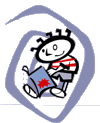 |
 |
 |
 
|
Nazis. The name invoked horror and fear in most, but for the Jews, it was a living nightmare. As the regime spread fast and furiously through neighboring countries, it was only a matter of time before Holland fell victim. In Anne Frank's Chestnut Tree readers are brought into Anne's life on May 10, 1940, when the Frank family became more targets for the Nazi army, watching in shock as all they knew changed in an instant. readers are brought into Anne's life on May 10, 1940, when the Frank family became more targets for the Nazi army, watching in shock as all they knew changed in an instant.
With the pressing dangers of the concentration camps, the Franks had no choice but to go into hiding for safety in an attic space they would call the Secret Annex. Author Jane Kohuth brings to new readers the story of Anne Frank and her struggles within the confines of the Secret Annex to maintain physical and emotional health.
With the constant bombing, guns, daily silence, close quarters, fears of discovery, and other high stress factors added in, Anne had much to combat herself as a young child in an extremely difficult situation. She loved the window with sun or moonlight and the chestnut tree that helped her to feel calm and brave. It became a truth in her life that nature was essential for soothing the suffering.
Anne Frank's Chestnut Tree is a beautifully scripted short write of the key points to Anne Frank's last years and the role that nature--particularly that chestnut tree--played in her life. This book is a Step 3: Reading on Your Own book targeted for grades 1-3 yet enjoyable and educational for all reading levels. As an introduction to the atrocities in World War II as well as to Anne Frank herself, this is will hopefully encourage an interest in further study of both the war and the Frank family in future. is a beautifully scripted short write of the key points to Anne Frank's last years and the role that nature--particularly that chestnut tree--played in her life. This book is a Step 3: Reading on Your Own book targeted for grades 1-3 yet enjoyable and educational for all reading levels. As an introduction to the atrocities in World War II as well as to Anne Frank herself, this is will hopefully encourage an interest in further study of both the war and the Frank family in future.
|







|
| |
Sonia R. Polinsky/2014 for curled up with a good kid's book |
|
|
For grown-up fiction, nonfiction and speculative fiction book reviews,
visit our sister site Curled Up With a Good Book (www.curledup.com)
|
|